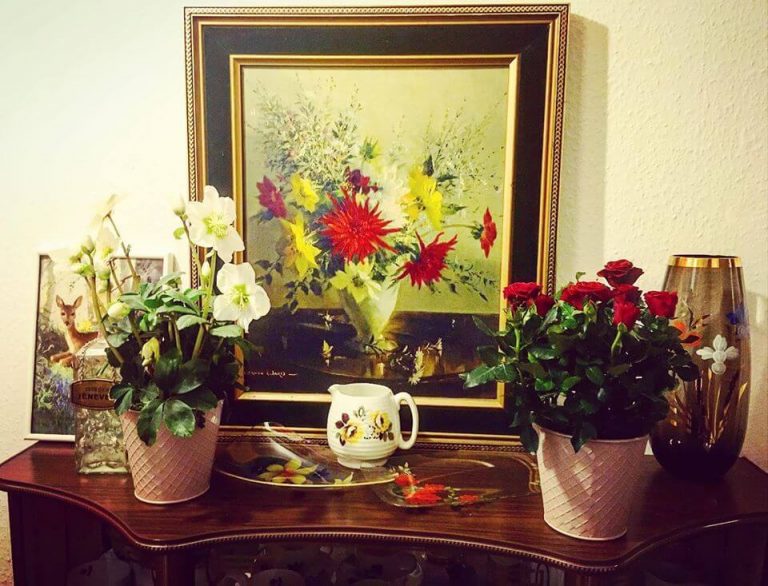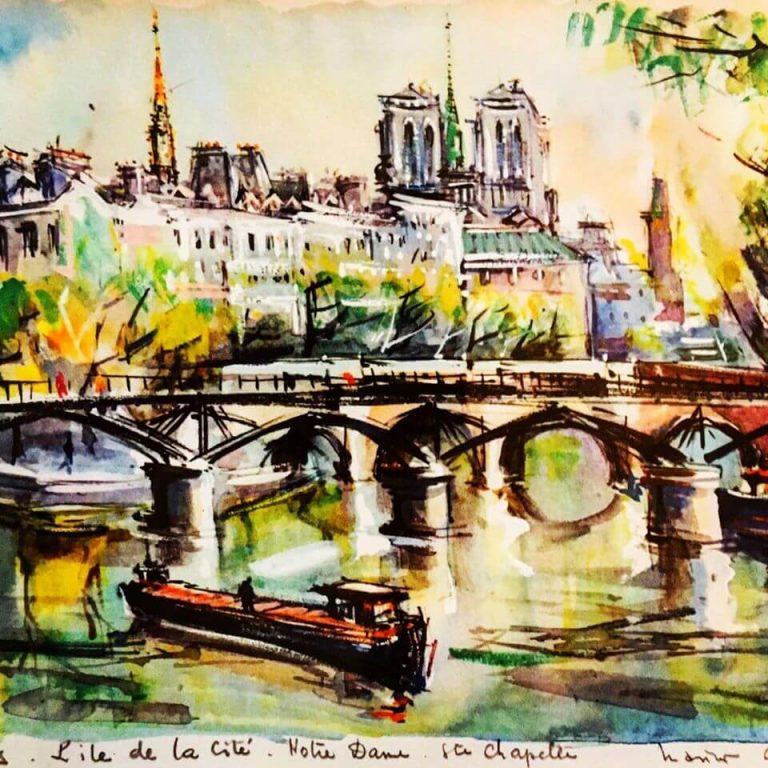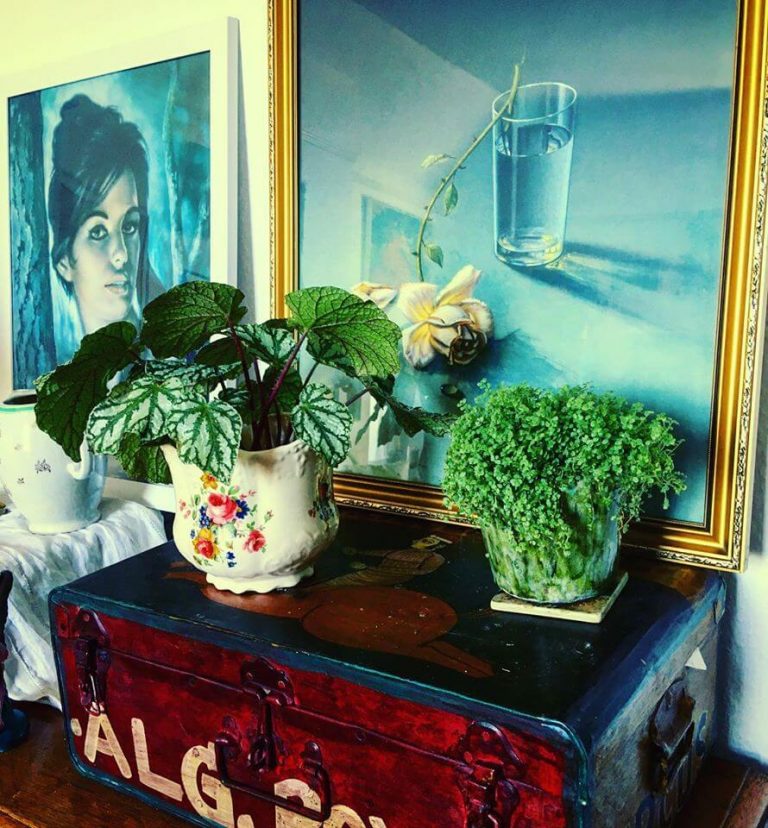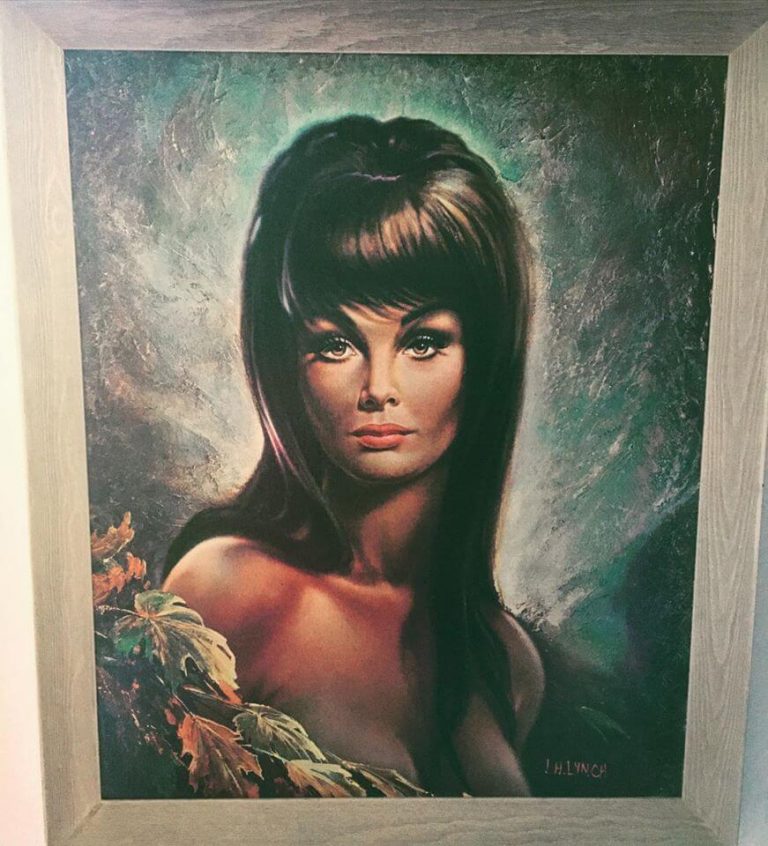Collecting Vintage Art:
How Midcentury Pictues
Healed Me
Content Warning: This piece references PTSD and past domestic abuse trauma.
As a survivor of domestic abuse from a child into adulthood, something which has left me with Complex PTSD, I struggle to settle, to attach, to belong; too often the rug has been pulled out from underneath my feet by unstable or even cruel people, from being thrown out of home at 18 to having to leave towns to escape abuse. Plus the insecure nature of renting since I’ve left my marriage means that homes can and have been taken from me on a landlord’s whim.
All of this left me in a state of prickly survival, of not bothering to decorate and make my current flat pleasing to me for over a year, despite being a naturally aesthetic person (I love art and was a London gallerina pre-university) and an avid vintage collector. After all, I’d just have to take pictures down when I inevitably had to move on, so why bother?
But in the wake of all the Marie Kondo minimalist fandom, as a writer and editor with a huge book collection, I found myself frustrated by her suggestions that we keep only a few tomes and basically chuck most of our things.
It’s then when I realised that, especially for those of us with trauma or loss, belongings create belonging.
To be able to turf stuff out suggested you had not only a support system in place to constantly reaffirm your identity beyond objects with all their memories and histories, but I also felt that the whole notion of minimalism smacked of economic privilege to me, as it suggested you already had a lot and could easily replace anything you later found you regretted letting go of.
Even though I felt superstitious that the very moment I put a picture up and dared to defy a lifetime’s fear of being thrown out of a home or having to even leave for my own safety, that I would be given my marching orders by my landlord, I started to take my midcentury art out of hiding and put it on my walls.
What had started with charity shop finds of Parisian tourist scenes of the ’50s and ’60s by my beloved Marius Girard had spiralled over time into other floral, shabby chic images. Random pieces pulled at my heart, including those of Vernon Ward, whose swans, deer and flamingos are increasingly gaining attention from vintage collectors.
But then I found more and more delight in my collection, expanding my love of Parisian art to the now very fashionable Arno, the slightly earlier work of Maurice Utrillo and the beautifully coloured French images of George Hann.
And each time I put something up, my flat not only transformed, but so did I.
I’d made my mark on my space – which is especially important as I work at home and am often housebound due to illness – realising that, when I do move, I can take my beauties with me and make this space look good as new for the owner and my next home just as lovely.
Hence I began to delve into the more collectible, more obvious vintage artists, buying three pieces by the much sought after J H Lynch, plus one Tretchnikoff and my favourite image of all, ‘Nina’ by Vandersyde, which appeared in the film of A Clockwork Orange.
Replicas of everything but ‘Nina’ are all readily available, but originals are sources of fierce Ebay auctions and command pretty high prices, both on there and Etsy. However, with interest in these works ever escalating, the canny could see these pieces as all great investments, though, for me, they’re pure beauty and I doubt I will ever part with them.
How to create your own vintage art collection
My main tip on finding pieces you love – and will create a vintage ambience in your home which heals you and gives you peace in this ever more hectic world – is following your eye and heart, rather than vintage trends.
If you’re buying this art with an eye to the kerching, of course, grabbing originals of certain big names that I’ve already mentioned may be a good idea, but mostly I would suggest you buy work which you love and lifts your soul.
Tretchnikoff, for example, doesn’t particularly charm me – well, only the florals – but the sexuality of Lynch’s and Vandersyde’s works resonates strongly for me. As a feminist, their subjects do not feel so much victims of the male gaze, but act as a reminder of the sexual revolution that was occurring at the time they were painted, which liberated women’s desire and stopped us having to hide our gorgeous bodies.
Check out charity shops, as it’s doubtful you’ll find a Lynch. Most of these places know the value of the more prominent big midcentury names now. Be prepared to root through antiques centres – which is where I found my Clement – as this way you’ll often get things cheaper than online, where auctions inflate prices and without paying massive postage for large paintings.
But mostly I say to keep mooching in these thrift stores as they’ve often got gorgeous surprises like wonderful original oils someone has cast aside or less well-known kitsch stuff like ‘big eye’ art. That’s how I developed my passion for it, as I did my love for vintage Paris paintings. Indeed, on my charity shop travels, I’ve found a kitsch tourist Spanish oil, a huge old Paris map, plus colourful tapestries and woodland scenes from even further back in the 30s or 40s – and often for between £3 to £10!
I would recommend getting vintage prints already framed, if you can. They’re often expensive to buy frames for as they’re often large images. Plus, it’s often a great sign of their age and authenticity if they’re sealed at the back and, would you believe it, being framed by Boots is a marker of trendy authenticity!
Similarly, I feel ignited (pun intended!) by ‘The Fire Dancer’ painted by Spanish artist, Clement (who I have a couple of paintings by), with her vivid red dress and the way she’s pulling the flames into existence with a beautiful power, reminding us women of all we are capable of.
I also adore cute ‘big eye’ pictures by Dallas Simpson – a British woman artist whose work rivalled Tretchnikoff’s in sales in the period they were both creating – Medeiros and the gorgeous ‘Innocence’ by Mojer, which probably all express my cat mama love, as so many of the featured figures are holding kittens!
In that way then, I feel it’s crucial to follow your own tastes and not trends if you want to use art to create a sense of glamour, individuality and thus restorative loveliness in your home.
Ultimately, collecting midcentury art doesn’t have to break the bank if you’re prepared to shop around and maybe are better able than me to prevail in an Ebay auction. Certainly, blazing your own trail too, rather than following what’s fashionable in the vintage world can also help.
After all, you can arguably create the same aesthetic with a replica of a Lynch print as an original, which you’ll often have to accept will have flaws, even if you pay a top price for it.
My collection is itself a mix of famous name originals with their chips and watermarks, as well as more minor pieces and a few replica prints. I guess my home then is a medley of midcentury style with a G Plan bureau for my writing, plus shabby chic touches with my purple velvet Chesterfield and floral fabrics, plus tons of vintage kitsch which I’ve loved since I was a kid with swan planters and Siamese cat figurines.
My walls are nearly full now with all my beauties, as I live in a one bed flat. I guess it’s time to take a pause in my art collecting, but every day my paintings bring me joy and inspiration and make me feel that this is my place – renting or not – and that I’m at home, finally, even after all that’s happened to me.
Dr. Sharon Zink is the author of Welcome to Sharonville (Unthank Books, 2014), which was longlisted for The Guardian First Book Award. She is also a feminist writing coach, editor and founder of The Feminist Writing School with a mission to get more womxn’s books written, published and out there changing the world. She lives in UK by the sea with her cat, Muse, a large book collection and everything vintage. You can receive her weekly Love Letters from the Literary Revolution with a bundle of articles on writing as a thank you for joining her community, follow her on Instagram where she is @drsharonzink or join her supportive feminist writing group on Facebook, as she loves getting to know fellow vintage fans, authors, booknerds and smashers of the patriarchy.








